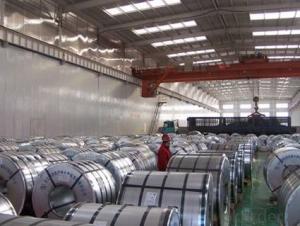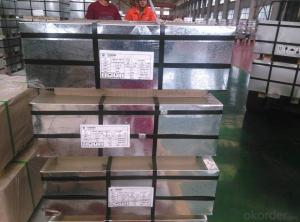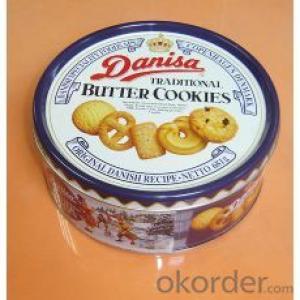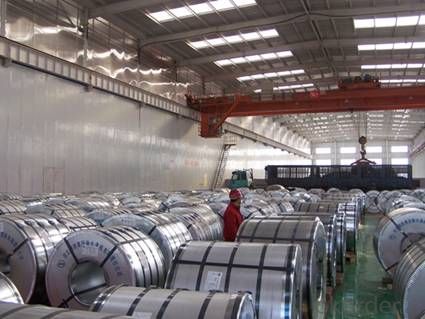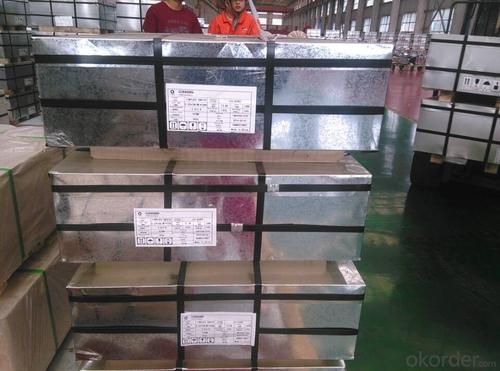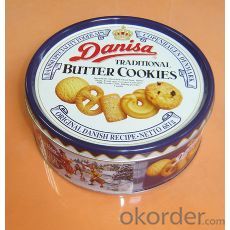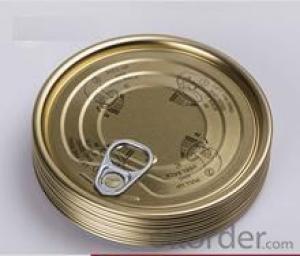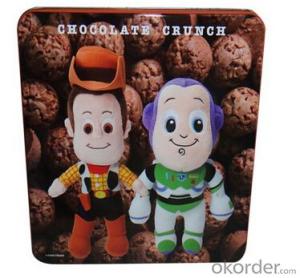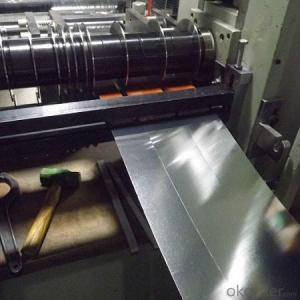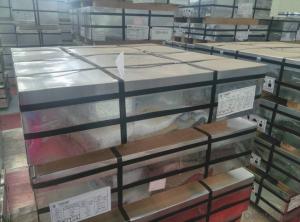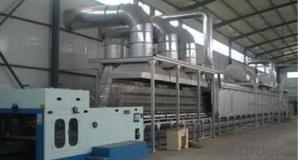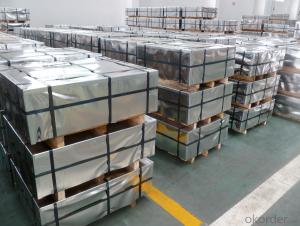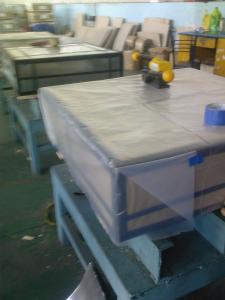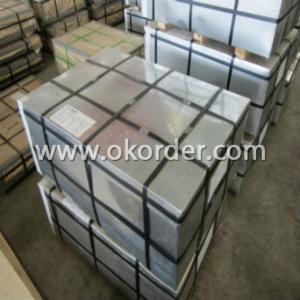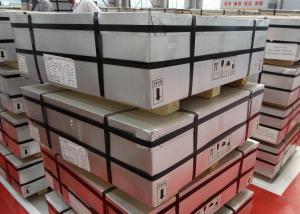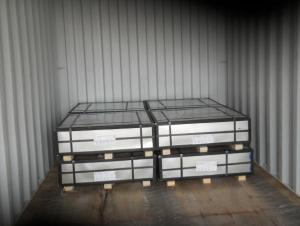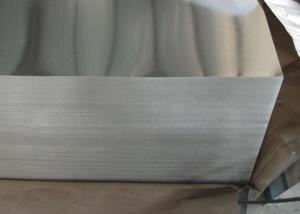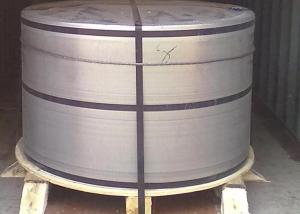Prime Quality Tinplate For Paint Cans, MR Material, BA
- Loading Port:
- Tianjin
- Payment Terms:
- TT OR LC
- Min Order Qty:
- 50 m.t.
- Supply Capability:
- 40000 m.t./month
OKorder Service Pledge
OKorder Financial Service
You Might Also Like
1.Usage
Tinplate is widely used for making all types of containers, containing industrial usage such as paint can, oil can, aerosol cans etc., and food cans like milk powder cans, tomato paste can, dry food cans etc.
2. Quality
As a state owned company and a large tinplate supplier in China, our tinplate quality ranks 1st level in China, similar to Bao Steel, Posco etc.
3. Specification
standard: GB/T2520, JIS G3303, DIN EN10202
Material: MR /SPCC
Thickness available: 0.16-0.50MM
Width available: 600~1050MM
Temper grade: T1 – DR8
Tin coating: ordinary 2.8g/2.8g, 5.6g/5.6g and others
Package: sea worthy export package.
Applications: Tin can for chemicals & paint cans, industrial cans, food cans
4. Our factory photo & equipments

5. Our Markets:
now our tinplate has been sold to more than 50 countries, including Europe country, Gulf Area, South American, South Afric etc.
6. Our Overseas Wareouses:
Furthermore, in the year 2014, we have more than 10 overseas warehouses all over the word, located in KSA, UAE, Oman, Russia, Kuwait, Qatar, Oman, Chile, Brazil etc.
7. FAQ
a. what's the annual output?
about 500,000 tons per year.
b. where's the raw matrial from?
our hot rolled coil is purchased from Capital Steel and other state owned mill, with quite good quality.
c. how long is the delivery time?
normally for SPCC about 45~55 days, while 65~75 days for MR material
d. how to control the quality during production process?
inside our workshop, we have MES syestem. It realizes the optimization of the production procedure in the workshop. It could record each step of the whole production procedures, and if some problem appears, factory could easily found and take action, it’s quite helpful to monitor and control the quality.
- Q: What are the main factors affecting tinplate coil surface finish?
- The main factors affecting tinplate coil surface finish include the quality of the raw materials used, the cleanliness of the production environment, the precision of the manufacturing process, and the level of smoothness and cleanliness of the coating applied to the tinplate.
- Q: Can tinplate be used for renewable energy applications?
- Yes, tinplate can be used for renewable energy applications. Tinplate, which is a thin sheet of steel coated with a layer of tin, offers several advantages that make it suitable for renewable energy applications. It is highly resistant to corrosion, which is crucial for components exposed to harsh environmental conditions. Tinplate also provides excellent electrical conductivity, making it suitable for various renewable energy technologies such as solar panels and wind turbines. Additionally, tinplate is recyclable, allowing for the sustainable use of materials in the renewable energy sector.
- Q: Can tinplate be used for storage containers?
- Yes, tinplate can be used for storage containers. It is a common material choice due to its durability, corrosion resistance, and ability to keep food and other items protected. Tinplate containers are commonly used for packaging and storing various products, including food, beverages, chemicals, and more.
- Q: Can tinplate be used for packaging products with sharp edges?
- Yes, tinplate can be used for packaging products with sharp edges. Tinplate is known for its durability and strength, making it suitable for packaging products that have sharp edges without causing any damage to the packaging material.
- Q: Can tinplate packaging be used for clothing accessories?
- Yes, tinplate packaging can be used for clothing accessories. Tinplate is a durable material that can be shaped into various sizes and designs, making it suitable for packaging items such as jewelry, pins, buttons, or small fashion accessories. It provides a stylish and unique packaging option that can enhance the presentation and protection of clothing accessories.
- Q: What are the different sizes and shapes of tinplate packaging available?
- There are various sizes and shapes of tinplate packaging available, ranging from small tins for individual items such as lip balm or mints, to larger tins for products like cookies or tea. The shapes can also vary, including round, rectangular, or square tins, as well as specialty shapes like heart or star-shaped tins.
- Q: What are the advantages of using tinplate for automotive components?
- There are several advantages of using tinplate for automotive components. Firstly, tinplate is highly corrosion resistant, which helps protect the components from rust and prolongs their lifespan. Additionally, tinplate provides excellent formability, allowing for complex shapes and designs to be easily manufactured. It also offers good strength and durability, ensuring the components can withstand harsh conditions and maintain their structural integrity. Furthermore, tinplate has good heat resistance properties, making it suitable for components that are exposed to high temperatures. Lastly, tinplate is a sustainable material as it is recyclable, contributing to environmental sustainability in the automotive industry.
- Q: How is tinplate stored and transported?
- Tinplate is typically stored and transported in rolls or sheets. It is commonly packaged in coils and secured with strapping or wrapping to prevent damage during transportation. These coils or sheets are then loaded onto trucks, ships, or trains for distribution to manufacturers and consumers. Additionally, proper handling and storage conditions are crucial to maintain the quality of tinplate, such as protecting it from moisture, extreme temperatures, and physical impact.
- Q: What are the different types of tinplate finishes?
- The different types of tinplate finishes include bright, matte, stone, lacquered, and printed finishes.
- Q: How does tinplate perform in terms of light blocking?
- Tinplate is an effective material for light blocking. Its thick and durable structure prevents light from passing through, making it suitable for applications that require complete light protection, such as packaging for light-sensitive products or containers for storing food and beverages.
Send your message to us
Prime Quality Tinplate For Paint Cans, MR Material, BA
- Loading Port:
- Tianjin
- Payment Terms:
- TT OR LC
- Min Order Qty:
- 50 m.t.
- Supply Capability:
- 40000 m.t./month
OKorder Service Pledge
OKorder Financial Service
Similar products
Hot products
Hot Searches
Related keywords
